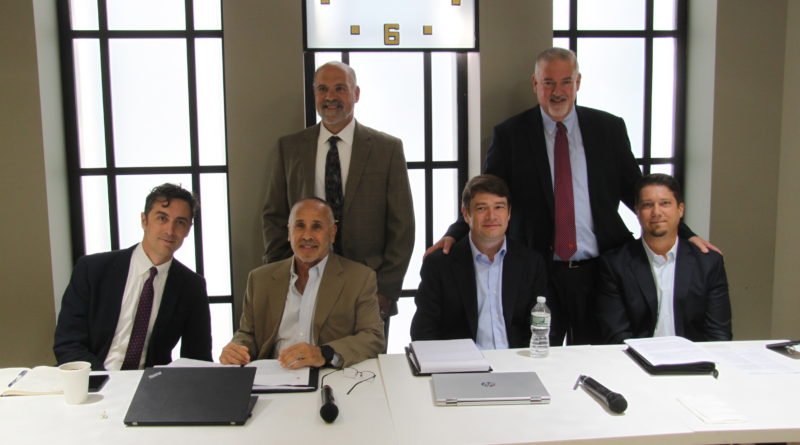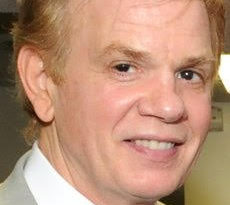Panel Breaks Down Impact of Energy Laws
BY BENJAMIN FANG
When the Climate Mobilization Act was enacted in New York City this past April, building owners worried openly about the costs of reducing their carbon footprint.
Local Law 97, one of the main bills in legislative package, requires buildings larger than 25,000 square feet to reduce greenhouse gas emissions 40 percent by 2030, and 80 percent by 2050. Otherwise, building owners will face fines.
Last Wednesday, a panel of energy experts convened at the Queens Chamber of Commerce to discuss the new law. They encouraged building owners, managers and brokers to act now and invest in improving efficiency and operational costs, all while staying in compliance.
“I don’t want your money, I want your carbon,” said Councilman Costa Constantinides, who penned the bill. “I wrote this legislation aggressively, but it’s achievable. We want your buildings to go green.”
According to the councilman, buildings are responsible for 70 percent of the city’s greenhouse gas emissions. Just 50,000 buildings are responsible for 30 percent of emissions.
The law sets caps on carbon emissions from large buildings. The first cap will be in place by 2024, followed by lower caps in 2030, 2035 and 2040.
According to Adam Stolorow, a partner at Sive, Paget & Riesel, one of the city’s oldest environmental law firms, most buildings covered in the 2024 cap are already in compliance.
Roughly 20 percent of buildings covered by that cap are not in compliance yet, which means they emit the most carbon.
“If you’re not in compliance, it means there’s a lot of low-hanging fruit you can get to,” Stolorow said, “in terms of energy efficiency and improvements that can help your building.”
The 2030 caps are more stringent. Stolorow said 80 percent of buildings would not be in compliance if they don’t do anything from now until 2030.
Each building’s emissions cap is based on the type of uses in the building, such as office, residential or manufacturing. The law assigns a code to each use.
To figure out the cap, owners can multiply each use by the square footage of the building.
Stolorow said most of the covered buildings are already reporting their emissions under Local Law 84, which former Mayor Michael Bloomberg passed in 2009 to start collecting benchmarking data. The new law uses that data as well.
Some buildings, such as large rent-regulated buildings and houses of worship, are exempt from the new law. Those facilities can either meet the caps or install a list of energy conservation measures, like individual temperature controls or insulating pipes, Stolorow said.
The Department of Buildings will issue regulations for the new law by 2023. The law also convenes an advisory panel that will commission several reports on caps and carbon trading.
If buildings do not meet their designated caps, the penalty can be steep. According to Stolorow, the fine is $268 per metric ton of CO2 equivalent emitted above the cap.
“Those penalties don’t go away,” he said. “They continue.”
But Stolorow added that the law gives building owners flexibility meet those caps and become more sustainable.
“The law was written to be deliberately vague so a lot of the solutions can come out as people start to think about how to comply with the caps,” he said.
Constantinides said the bill includes PACE financing, so owners can no-interest or low-interest loans for their projects. They can also apply for renewable energy credits.
If PACE financing doesn’t work, owners can also purchase renewable energy as long as it’s connected to the New York City area.
Local Law 97 also created the Office of Building Energy Emissions Performance (OBEEP) to give technical assistance to building owners.
“These are all things that will make your building more valuable, more desirable to live in,” Constantinides said. “Your insurance costs are going to go down. In the end, you’re going to save money on your energy costs.”
The Astoria lawmaker noted that the words “good faith” were written several times in the bill. If building owners can’t meet their cap, but have attempted to through several means, they can get an adjustment on either their carbon number or their penalty.
“This is not about putting money in the city’s coffers,” Constantinides said. “This is about recognizing the significant impact that climate change will have on our society, and dealing with the most important part of it.”
To help guide building owners through the process of compliance, as well as produce environmental benefits and reduce operational costs, the Queens Chamber of Commerce’s Energy Committee formed a “Gold Star Task Force.”
Marshall Haimson, president of E-Capital Development and chair of the committee, said they handpicked 12 energy experts to serve on the task force. Haimson moderated the panel last week.
“When you interact with our committee, you’ll get a holistic view on how to address the needs of the buildings in light of this law,” he said.
Other participants on the panel included David Forman, vice president of energy solutions at Ecosave, Inc., and Matthew McCue from JouleSmart Buildings.
Stephen Owen, founder and principal of the solar consulting firm SOL ALLIANCE, said while the penalties, or the “stick,” is five to 10 years away, the “carrot” is now.
“The compliance factor does help to shine a light on existing opportunity incentives to target these goals,” he said. “It’s time to look at energy solutions already available to you.”
He noted that the New York State Energy Research and Development Authority ( NYSERDA) is giving $5 trillion to energy stakeholders, including $1 trillion to solar. The solar industry has proliferated in New York City over the last decade, he said.
“It’s time for everybody to see the writing on the wall,” Owen said. “This is something you can take advantage of, not just be in compliance with.”




